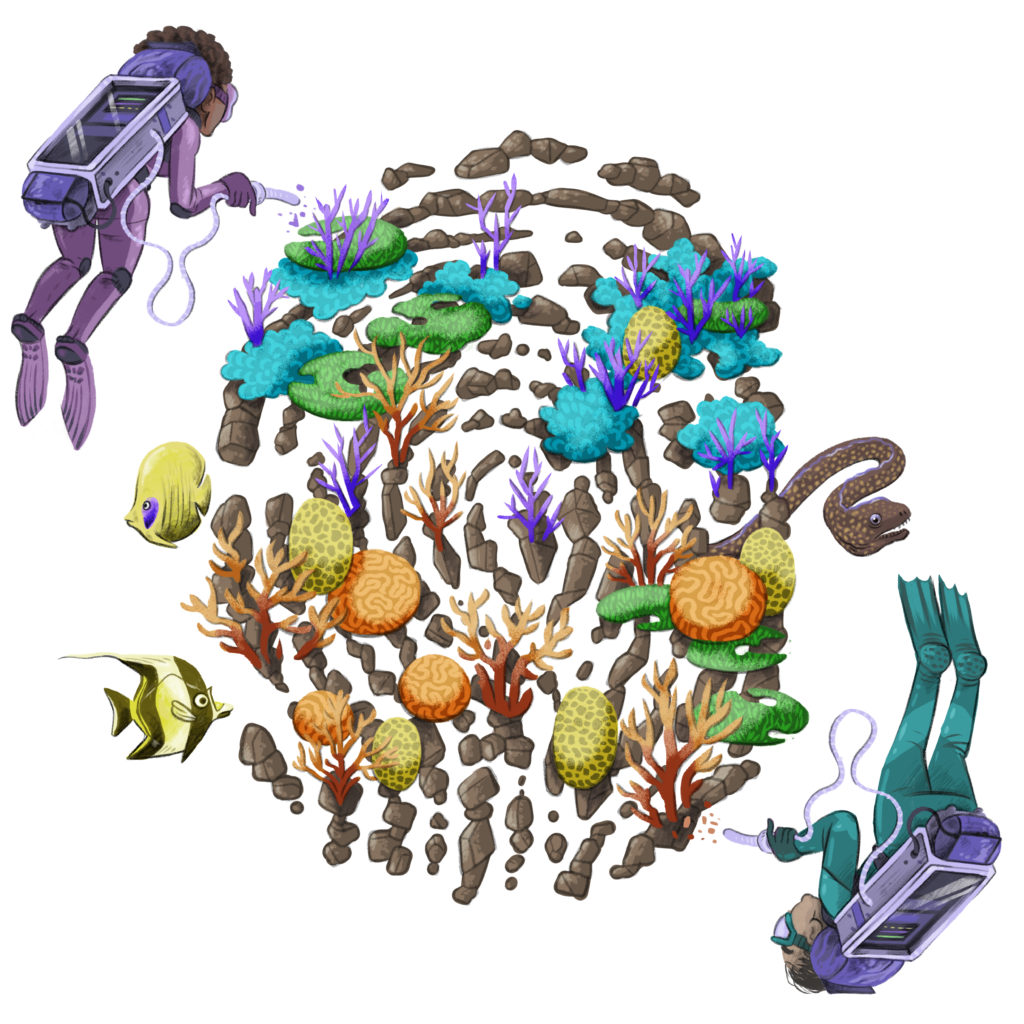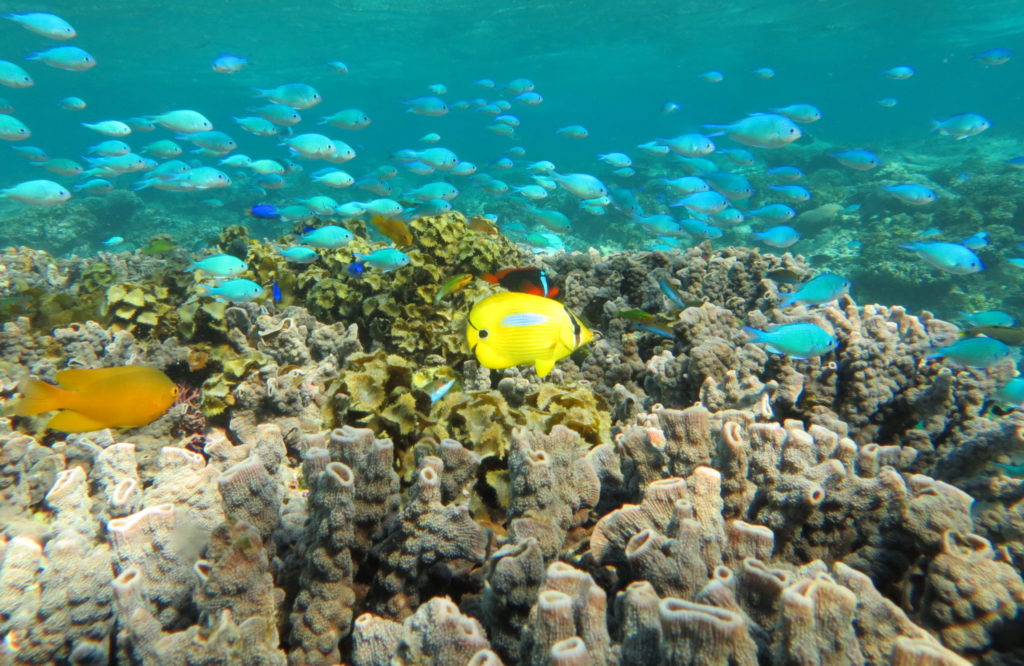
Marine microbes make up 90 per cent of ocean biomass. Changes to marine microbes can have a domino effect on entire marine ecosystems.
We asked for your ideas to protect and manage future oceans, as part of our World Oceans Day competition. And you delivered!
Congratulations to David Abbott for one of the winning entries. David’s idea was:
Microbial fingerprinting of marine ecosystems to understand key microbes associated with healthy or poor reefs and those transitioning… for quick assessment of ecosystems.

David was on the right track when suggesting marine microbes are the key to future ocean health. Marine microbes from seawater sampling helps us track ocean changes. Illustration: Campbell Whyte.
What are microbial fingerprints? Do they really exist? And if they do, what do they tell us about the ocean? We asked Andrew Bissett, team leader for our Environmental Genomics team, to tell us more.
Probing into microbes
A microbiome is the collection of microbes (bacteria, fungi, protozoa, viruses) living in an environment. That environment could be the ocean, the soil or an animal.
Just like the microbiomes in our gut influence our health, marine microbiomes influence ocean health.
Marine microbes can’t be seen with the naked eye. But they produce half the oxygen we breathe and provide food for all marine life. If microbiomes change, this can have a domino effect on entire marine ecosystems.
Attention is in the DNA detail
Unlike larger species, such as plants and fish which are slower to respond to ocean changes, the marine microbial community responds quickly to changes in the environment. That’s why collecting long-term data on microbes is key to understanding and predicting ocean health.
We use markers from microbial DNA like a tracking device. Any changes to the DNA sequences shows how microbes are responding to changes in the marine environment. This could be from the influence of climate change, ocean temperature, metals or pollution.
This is particularly helpful for monitoring environmental stressors for marine ecosystems, like the Great Barrier Reef for example. It enables us to map specific tell-tale signs of change, such as ocean warming, and how this is impacting the Reef.

We can barcode marine life, including ‘invisible’ but important microbes and fish using their DNA found in the water to track ocean health. Image: Russ Babcock.
On the microbial hunt
To record and track microbes, we regularly take water and sediment samples from the ocean. This includes from the Integrated Marine Observing System’s National Reference Stations across Australia.
The data is collected over years to establish a baseline and detect changes over time. This data feeds into the Australian Microbiome Initiative which brings leading research institutions together to make all things microbial from many environments, including the ocean, publicly available.
From our samples, we’ve recorded more than 940,000 marine microbial organisms and close to 720 million sequences. This builds on marine microbe datasets.
Invisible diversity
From a bucket of sea water, we can identify not only microbes, but also other marine life nearby such as fish, whales and even seaweed. We use their environmental DNA, known as eDNA, without even seeing them! This is because they shed cells and fragments of DNA in the water. We use this to sequence their DNA and identify them. It’s like a barcode for marine life. We used this method recently to track tropical fish in Ashmore Reef. This method helps us map biodiversity of all kinds.
Microbes can also enhance the environment’s resilience to stress. For example, we are exploring how to manipulate microbe bacterial communities in seagrass. This will assist with seagrass restoration and conservation.
Thriving or surviving: key to our seas
Making up 90 per cent of ocean biomass, marine microbes are indeed the key to managing marine ecosystems, such as reefs, as David suggests in the winning idea.
Marine microbes will continue to play an important role for assessing if our oceans are thriving or surviving. Our goal – through machine learning – is to predict what changes will occur before they happen. This will unlock what our future oceans will look like.


15th June 2020 at 2:02 pm
Good story. Love the illustration! Who was the illustrator?
16th June 2020 at 9:09 am
Thanks Stuart! This piece, and the other World Oceans Day illustrations, were created by Campbell Whyte.
Thanks,
Georgia
Team CSIRO